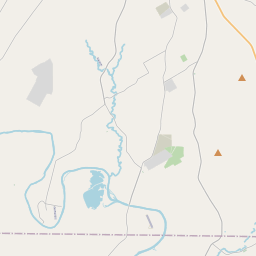Walker Bend Community and Cemetery
Historical marker location:






Located in Parker County on a bend in the Brazos River, the Walker Bend Community was named for W.J. Walker (1821-1901) who settled in this area in the 1860's. By 1884 settlers established the Walker Bend School that served students until 1925. The nearby cemetery contains 24 recorded graves including pioneers and Walker Family members. The oldest recorded grave is that of Thomas Walker, in 1878, infant son of W.J. Walker and his wife "Aunt Jenny" Walker. The cemetery, neglected for many years, was restored by the Abandoned Cemetery Association in 1993. (1996)
As one of the most visible programs of the Texas Historical Commission (THC), historical markers commemorate diverse topics in Texas history, including: the history and architecture of houses, commercial and public buildings, religious congregations, and military sites; events that changed the course of local and state history; and individuals who have made lasting contributions to the state, community organizations, and businesses.
Texas is home to the world's largest bat colony. The Bracken Bat Cave, near San Antonio, is home to millions of Mexican free-tailed bats.
In 1855, Parker County was officially established and named after Fort Parker. The county quickly grew as more settlers flocked to the region attracted by fertile land and an abundance of water sources. The advent of the Texas and Pacific Railway in the late 19th century further spurred growth and development in the county.
Parker County played a significant role in the cattle industry during the late 19th and early 20th centuries. The county's open prairies became an ideal location for cattle ranching, and the development of railroads allowed ranchers to transport their livestock to markets more efficiently. This led to prosperity and economic growth in the county, with many cattle ranches operating successfully.
Over the years, Parker County has seen its fair share of challenges and triumphs. It has weathered economic downturns, faced natural disasters like the devastating tornado outbreak in 1957, and experienced growth in population and urbanization. Today, Parker County continues to thrive as a vibrant community with a rich history, welcoming residents, and picturesque landscapes that highlight its enduring legacy as an important part of Texas' past and present.
Parker County Timeline
This timeline provides a glimpse into the major events and milestones that have shaped the history of Parker County, Texas.
- 1855: Parker County officially established on December 12.
- 1856: Fort Worth becomes the county seat.
- 1872: Weatherford becomes the county seat.
- 1877: Santa Fe Railroad arrives in Weatherford.
- 1885: The first oil well is drilled in the county.
- 1919: Parker County experiences the deadliest tornado in Texas history, resulting in 114 fatalities.
- 1956: The first major shopping center, Town & Country Shopping Center, opens in Weatherford.
- 1974: Weatherford College is established.
- 1993: Lake Weatherford Dam fails, causing significant flooding in the area.
- 2010: Parker County celebrates its 155th anniversary.